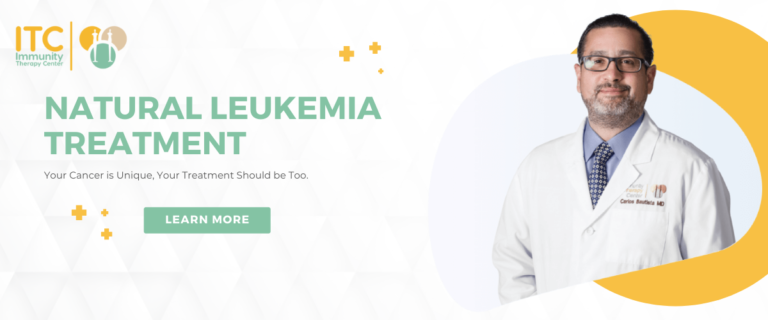Leukemia is a cancer type that affects the blood and bone marrow, thus causing it to manifest several symptoms. Among the more common of these experienced by leukemia patients is joint pain.
This comprehensive guide will delve into leukemia joint pain, exploring its symptoms, causes, and management strategies.
Understanding the Link: Leukemia and Joint Pain
Commonly referred to as blood cancer, Leukemia affects the production of blood cells in the bone marrow. This disruption can lead to several complications, including joint pain. The connection between acute leukemia and joint pain lies in leukemia cells’ impact on the bone marrow and its surrounding structures.
When leukemia cancer cells reach the bone marrow, it interferes with producing healthy blood cells. This results in the bone marrow becoming overcrowded, which leads to increased pressure and inflammation in the bone marrow and the adjacent areas. This inflammation can trigger joint pain and discomfort.
According to the Leukemia & Lymphoma Society, some individuals experiencing leukemia endure bone or joint pain often felt in the long bones of the arms and legs, the ribs, and the breastbone. This pain is sometimes followed by swelling in the large joints, like the hips and shoulders, several weeks after bone pain begins.
Common Symptoms of Leukemia Joint Pain
Leukemia joint pain can manifest in various ways, and the symptoms experienced may differ from person to person.
According to Medical News Today, as abnormal cells build up near or inside bones, they cause unexplained bone or joint pain ranging from a dull ache to severe pain and discomfort.
As such, some common symptoms associated with leukemia-related joint pain to look out for include:
- Aching and Stiffness: Leukemia joint pain often presents as a persistent aching sensation in the affected joints. The aching can range from mild to severe and is usually accompanied by stiffness, eventually hindering individuals’ mobility.
- Swelling and Redness: In some cases, leukemia-related joint pain may cause visible swelling and redness in the affected joints. The swelling results from the inflammation caused by leukemia cancer cells in the bone marrow.
- Limited Range of Motion: Leukemia joint pain can restrict the range of motion in the affected joints. Simple tasks like walking, bending, or lifting objects may become challenging due to the discomfort and stiffness caused by joint pain.
- Fatigue and Weakness: Leukemia joint pain can contribute to fatigue and weakness. The continuous pain and discomfort can drain energy, making it harder for individuals to engage in daily activities.
Diagnosing Leukemia-Related Joint Pain
When having extended bouts of joint pain, it is highly recommended to consult with a healthcare professional as soon as possible to diagnose if it is leukemia-related or not properly.
According to a study by the National Institutes of Health, bone and joint pain have been reported to occur in 21–59 percent of children with acute leukemia. In comparison, a much lesser 4 percent of adults experience leukemia-related musculoskeletal manifestations.
Leukemia symptoms often vary depending on the type of leukemia diagnosed. Some signs, like night sweats, fever, fatigue and achiness, often resemble flu-like symptoms.
Unlike any flu symptom which generally subsides as patients get better however, leukemia symptoms—which may include sudden weight loss, bone and joint pain and easy bleeding or bruising—can last for over two weeks.
The diagnostic process for leukemia-related joint pain typically involves:
- Medical History and Physical Examination: A review of your medical history will be made and will coincide with a physical examination to assess the extent and nature of your joint pain.
- Blood Test: So, how can you test for leukemia at home? The blood test is an essential component of diagnosing leukemia. They can help identify abnormalities in the blood count and indicate whether leukemia is the underlying cause of your joint pain. At home blood test kits are widely available.
- Bone Marrow Aspiration and Biopsy: In some cases, completing a bone marrow aspiration and biopsy may be needed to confirm the presence of leukemia cells and determine the type and stage of leukemia, whether you’re showing early signs of leukemia or end stage leukemia.
- Imaging Tests: X-rays, CT scans, or MRI scans may be recommended to further evaluate the condition of the joints and surrounding structures. These tests are also used to determine other types of cancer like brain cancer.
Treatment Options for Leukemia Joint Pain
In addition to eating foods that fight leukemia, the treatment of leukemia joint pain focuses on managing pain, reducing inflammation, and improving overall joint function. The following treatment options may be considered:
- Medications: Non-steroidal anti-inflammatory drugs (NSAIDs) are often prescribed to address joint pain and reduce inflammation. For more severe cases, corticosteroids are usually what’s prescribed next.
- Physical Therapy: Physical therapy is vital in improving joint mobility, strength, and function. Our trained therapists at Immunity Therapy Center can design a personalized exercise program to target specific joints affected by leukemia-related joint pain.
- Alternative Approaches: Other types of therapies like meditation, yoga, and massage therapy can help provide additional relief from joint pain and contribute to overall well-being. You can discuss these options with the ITC healthcare team to understand its safety and effectiveness.
Managing Joint Pain: Tips and Strategies
In addition to medical interventions, there are several lifestyle modifications and self-care strategies that can help manage leukemia-related joint pain:
- Maintain a Healthy Weight: Excess weight puts additional stress on the joints, exacerbating joint pain. By losing some pounds followed by maintaining a healthy weight, the burden on the joints can be reduced significantly.
- Exercise Regularly: Doing low-impact exercises like swimming or cycling can strengthen the muscles around the joints and improve joint flexibility. A simple consultation with a physical therapist can help determine the most suitable exercise regimen for your condition.
- Apply Heat or Cold Packs: Applying heat or cold packs to the affected joints can help reduce inflammation and alleviate pain. Experiment with both options to see which provides the most relief for you.
- Practice Joint Protection Techniques: Be mindful of your joint movements and avoid repetitive or excessive stress on the affected joints. Utilize assistive devices, such as braces or splints, to provide support and stability to the joints.
Finding Support: Resources for Leukemia Patients
Dealing with leukemia joint pain can be challenging, both physically and emotionally. It is essential to seek support and connect with others who may be going through similar experiences. Here are some resources that can provide valuable assistance:
- Leukemia & Lymphoma Society (LLS): The LLS offers a wealth of information, support programs, and educational materials for leukemia patients and their families. Visit their website at [www.lls.org](https://www.lls.org) for more information.
- American Cancer Society (ACS): The ACS provides comprehensive resources, including support groups, counseling services, and information about financial assistance programs. Explore their website at [www.cancer.org](https://www.cancer.org) to access their resources.
Taking Control of Leukemia Joint Pain
Leukemia joint pain can significantly impact the quality of life of individuals diagnosed with leukemia. By understanding the connection between leukemia and joint pain, recognizing the symptoms, and seeking appropriate medical care, you can take steps to manage the pain effectively.
The Immunity Therapy Center can help you fight leukemia more naturally and non-invasively. We treat leukemia by offering a wide range of alternative, natural remedies customized to your health, medical history, and cancer progression.
Remember, each individual’s experience with leukemia joint pain may differ, so it is crucial to consult with your healthcare team for personalized advice and support. By incorporating lifestyle modifications, following cancer treatment recommendations, and accessing available resources, you can regain control and live a fulfilling life despite leukemia joint pain. Contact us to learn more today.
Note: This article is for information purposes only and is not meant to replace professional medical advice. It is important to always consult with a healthcare professional to receive a proper diagnosis and personalized cancer treatment recommendations.
Written By: Dr. David Alvarez
Dr. David Alvarez is a Board Certified Medical Doctor from Universidad Xochicalco and Certified by the American Heart Association (Advanced Cardiovascular Life Support).
Dr. Alvarez has been collaborating with Dr. Bautista as an Assistant Medical Director at the Immunity Therapy Center for over 6 years. He provides daily on site patient care and participates on the medical board on research and development of patient treatment plans and programs. Dr. Alvarez is a knowledgeable and compassionate Doctor committed to helping patients get to where they want to be health wise through a more holistic and comprehensive approach.
Sources:
- Bautista, Dr. “How Is Leukemia Diagnosed? | Immunity Therapy Center.” Immunity Therapy Center, 8 June 2020, www.immunitytherapycenter.com/blog/how-is-leukemia-diagnosed/Accessed 13 June 2023.
- Nall, Rachel. “What Are the Symptoms of Leukemia?” Medicalnewstoday.com, Medical News Today, 28 Jan. 2020, www.medicalnewstoday.com/articles/leukemia-symptoms/Accessed 13 June 2023.
- “Managing Side Effects | Pain Related to Disease and Treatment | LLS.” Lls.org, 2023, www.lls.org/treatment/managing-side-effects/pain/disease-and-treatment-related-pain/Accessed 13 June 2023.
- Sakata, Hiroyuki, et al. Acute Leukemia Presenting as Bone Pain with Normal White Blood Cell Count. no. 4, May 2014, pp. 249–49, https://doi.org/10.1002/ams2.46/Accessed 13 June 2023.
At Immunity Therapy Center, our goal is to provide objective, updated, and research-based information on all health-related topics. This article is based on scientific research and/or other scientific articles. All information has been fact-checked and reviewed by Dr. Carlos Bautista, a Board Certified Medical Doctor at Immunity Therapy Center. All information published on the site must undergo an extensive review process to ensure accuracy. This article contains trusted sources with all references hyperlinked for the reader's visibility.

